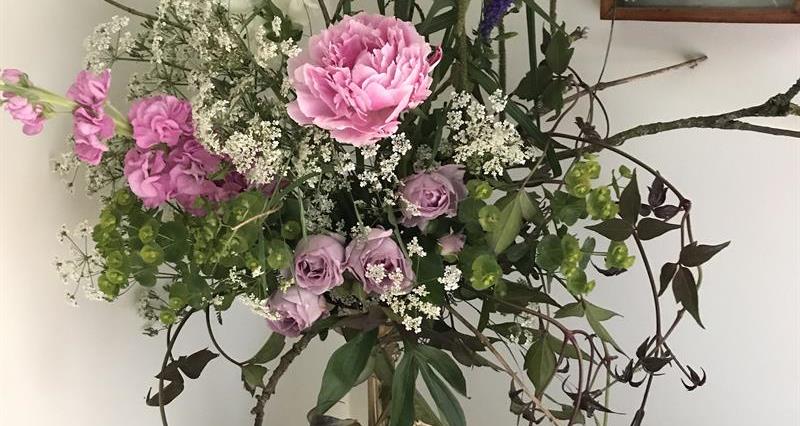Here are Lucy Oates' top tips for making your own flower arrangement in the style of Constance Spry.
You will need:
- A basket
- A pair of sharp scissors or secateurs
- A bucket
- A block of floristry foam or a piece of chicken wire, or alternatively a flower ‘frog’ (almost like a pin cushion for floral arrangements that you can push stems into to hold them in place).
- A suitable container (Constance favoured vases with a stem or pedestal, which allowed her to create the height and movement that typified her arrangements)
- Waterproof floristry tape or tack (if you’re using foam)
Method
- For this mid-summer homage to Constance, I’ve chosen an ornate vintage container comprising a shallow bowl on a long stem, which once belonged to my grandmother. Echoing what’s available in the garden and countryside right now, I’ve chosen a mixture of wild and cultivated materials in a palette of pinks, mauves and creams, including a peony to add a real wow-factor, roses, antirrhinums (snap dragons), stocks, lichen-covered branches, grasses with gently trailing seed heads and, of course, some of Constance’s beloved cow parsley, which grows near my home.
- Once you’ve gathered together your chosen materials, strip away any excess foliage from the base of the stems, cut each one diagonally (to maximise water take-up) and plunge them into a bucket of cold water for a good drink. Leave them overnight, if you can.
- The vase I’ve used didn’t have enough depth to allow me to use a frog or chicken wire, so I’ve cut a piece of foam to size, soaked it in water and secured it with floristry tape. If you’re using chicken wire, scrunch it up into a ball (wearing gloves to protect your hands) and push it down into the vase so you can slot the stems into the holes to support them.
- When arranging your flowers, don’t worry about symmetry, simply allow your chosen materials to dictate the shape. If a stem gently curves or falls in a particular direction, allow it to do so. This style of floral art is definitely not about forcing your materials into position. Start with a focal point; the lichen-covered twig and peony are my weightier items so I’ve positioned them near the centre. Allow some of the lighter and more delicate materials to gently trail down or reach upwards, according to their natural shape and form.
- In the words of Constance herself… “Do what you please, follow your own star; be original if you want to be and don’t if you don’t want to be. Just be natural and light-hearted, and pretty and simple and overflowing and general, and baroque and bare and austere and stylized, and wild and daring and conservative, and learn and learn and learn. Open your mind to every form of beauty.”

